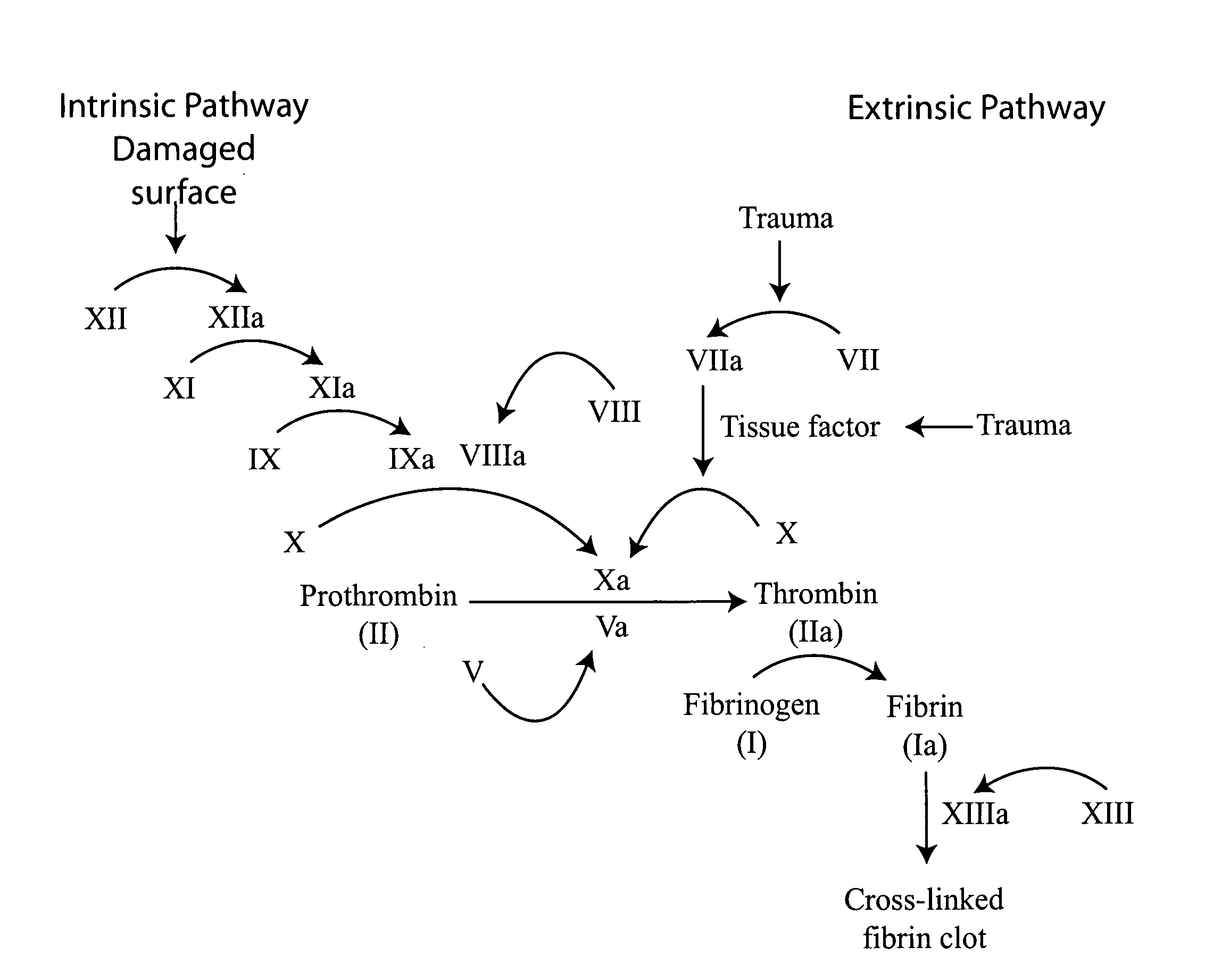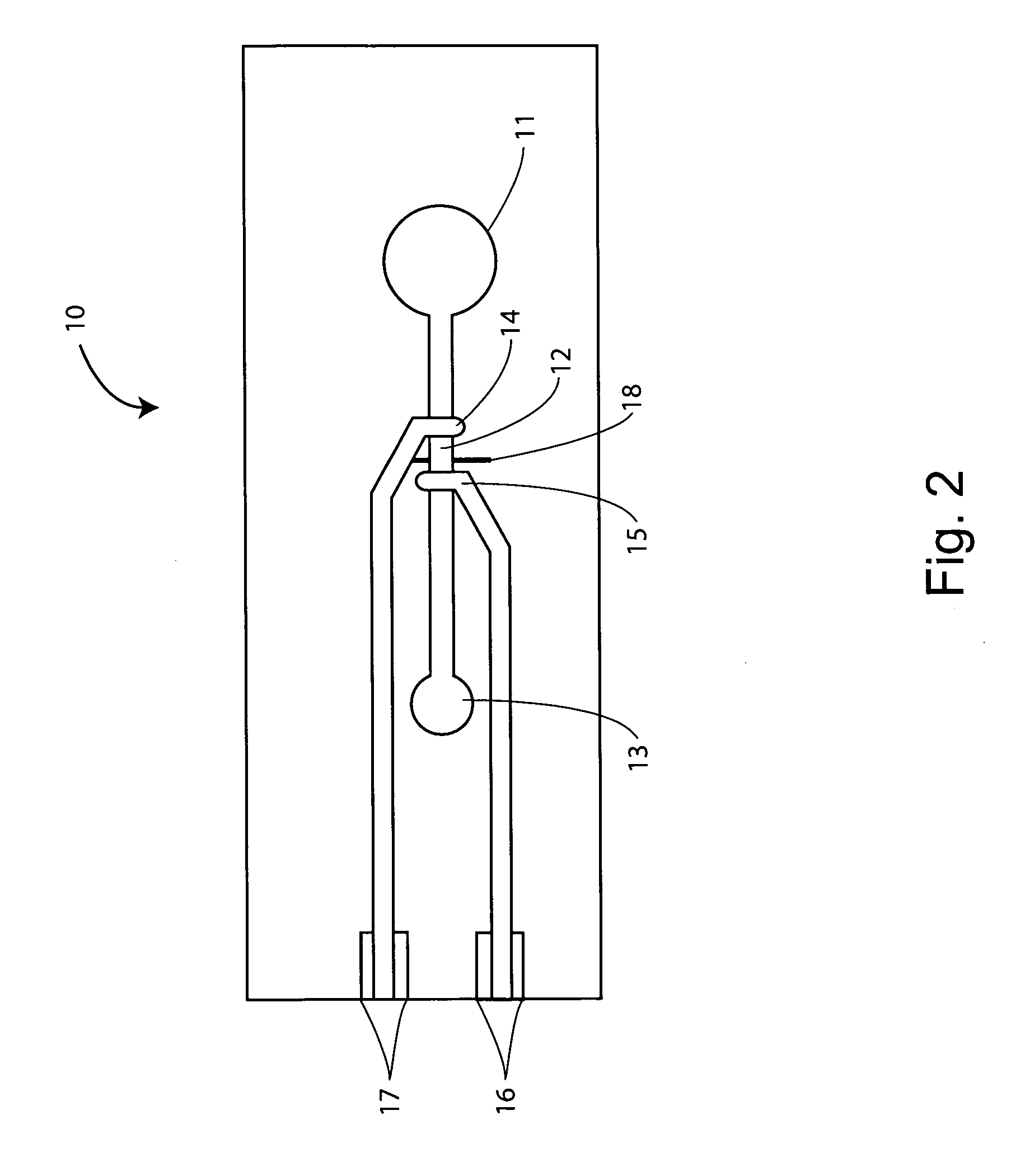Inductive coagulation sensors and devices
a technology of inductive coagulation and sensors, applied in the direction of resistance/reactance/impedence, instruments, material analysis, etc., can solve the problem of plasma clot, and achieve the effect of enhancing accuracy and sensitivity of sample analysis
- Summary
- Abstract
- Description
- Claims
- Application Information
AI Technical Summary
Benefits of technology
Method used
Image
Examples
example
Prothrombin Time (PT) in a Micro-Scale Device
[0099]The following examples are offered to illustrate, but not to limit the claimed invention.
[0100]The prothrombin time (PT) measures the function of the coagulation extrinsic pathway. In a clinical setting, the PT is used to determine the clotting tendency of blood, monitor warfarin dosage, to detect liver disease, and can suggest a vitamin K deficiency. The normal range for prothrombin time is usually around 12-15 seconds.
[0101]In a standard PT assay time, blood is drawn into a test tube containing liquid citrate, which acts as an anticoagulant by binding the calcium in a sample. The blood is mixed, then centrifuged to separate blood cells from plasma. An excess of calcium is added (thereby reversing the effects of citrate), along with tissue factor (also known as factor III or thromboplastin). The time the sample takes to clot at 37° C. is traditionally detected mechanically or optically.
[0102]A PT can be determined using the methods...
PUM
 Login to View More
Login to View More Abstract
Description
Claims
Application Information
 Login to View More
Login to View More - R&D
- Intellectual Property
- Life Sciences
- Materials
- Tech Scout
- Unparalleled Data Quality
- Higher Quality Content
- 60% Fewer Hallucinations
Browse by: Latest US Patents, China's latest patents, Technical Efficacy Thesaurus, Application Domain, Technology Topic, Popular Technical Reports.
© 2025 PatSnap. All rights reserved.Legal|Privacy policy|Modern Slavery Act Transparency Statement|Sitemap|About US| Contact US: help@patsnap.com



